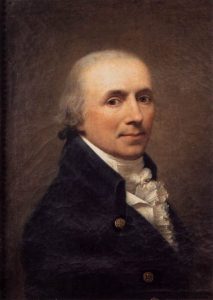Biography

LANDI Gaspare, painter (Piacenza 1756 – 1830). After studying in his hometown, he moved to Rome in 1771, attending the Academy of San Luca under the guidance of Pompeo Batoni and Domenico Corvi. But the painter most admired by the young man from Piacenza was Raphael Mengs, who had recently passed away when Landi arrived in Rome.
He becomes friends with Angelica Kauffmann, with whom he shares numerous commission of portraits, but above all he becomes friends with Antonio Canova, as shown by the penetrating face of the famous sculptor, today at the Borghese Gallery in Rome, painted by Landi in 1806.
In 1774 he married Giuseppa Albanesi who gave him two children, Alfonso (destined to die at only twenty years of age, after graduating in law) and Pier Antonio.
In the meantime, he continues to keep in close contact with the artists of northern Italy (Bossi, Appiani), to whom his love for Leonardo and Correggio binds him, facilitated by the numerous commissions that come to him from the nobility of the north, such as the Belgioioso princes of Milan. Contacts with the hometown are also frequent. Where he took refuge in the years of the revolutionary ferment: here in 1797 he was commissioned to paint the paintings for the Cathedral depicting the Transport of the Virgin to the tomb and the Finding of the empty tomb that he sent from Rome in 1804.
His lyrical-sentimental neo-classicism, soft in colors and attentive to the representation of affections, is opposed to the heroic one of Vincenzo Camuccini. The stylistic distance between the two artists appears clear in 1808, on the occasion of the exhibition in Rome of the canvases for the Piacenza church of San Giovanni in Canale, when The ascent to Landi’s ordeal gets less consent than the Presentation at the Camuccini temple, but is praised for the beautiful heads, all drawn from life. In fact, his portraits are particularly sought after for the naturalness of expression and complexions.
Also important was his didactic commitment carried out from 1812 to 1827 at the Academy of San Luca of which he was president in 1817. Numerous also the honorary offices received: in 1814 the king of Naples awarded him the Knighthood of the Two Sicilies and in 1815 he was named Grand Knight of the Order of San Giuseppe in the Grand Duke of Tuscany.